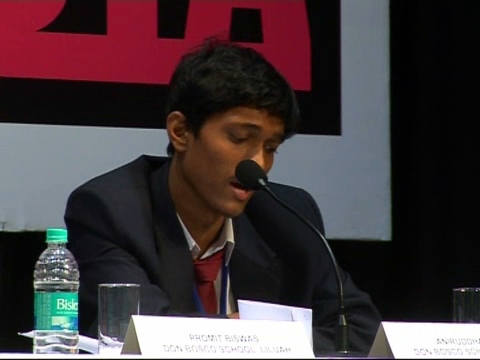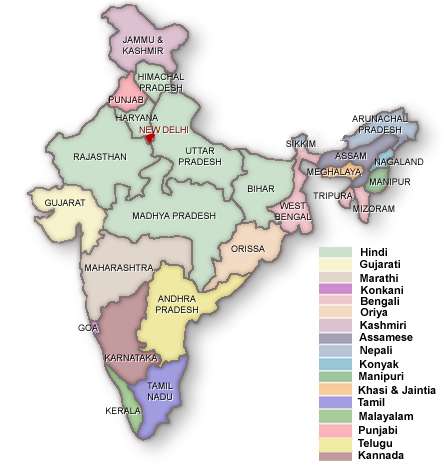From The Peopling of New York City

In every country, and within any culture, clashes and differences between people tend to lead to tensions, prejudices, and stereotypes. We can see that there are countless differences that distinguish Northern and Southern culture, but what is the main cause of the divide between these two related peoples?
Of course there is a myriad of reasons, but for many the main problem seems to spur from the language difference. When Reema Prakash was asked what she thought the main reason for this divide was, she didn’t hesitate and immideately answered: “It comes down to the Language I think-you speak Hindi usually in the North, and you don’t really speak Hindi in the South. “
Additionally, Adithya, a graduate student of Computer Science living in the United States wrote that “The fact that one community cannot understand the other’s language leads to baseless assumptions, ridicule and fantasies.” Since the Southern states do not speak Hindi, they become somewhat disconnected from the Northern community, and are often looked upon by them as backwards.
Reema also supports this idea where she mentions that “North Indians say sometimes that south Indians are inferior because Hindi is national language which is spoken in the north, so south Indians don’t speak it or speak it as well. […] No one really treats me differently because I speak good Hindi.”
Spurring from the Hindi language divide and the increasing Western influence on the North, the South also becomes somewhat removed from the popular culture of the North. This popular culture is evident in Jackson Heights as most stores sell North Indian clothing and artifacts. Southerners often see this as materialistic and emphasizing show and splendor. Bollywood is an example of this, as it reflects almost entirely North Indian culture. Reema Prakash mentioned how Bollywood mocks South Indians often and “shows stereotype of the southern wife as very conservative and more village simpleton type of thing since it isn’t as developed as North.” (Interview Reema)
As they are often better English Speakers and more involved in fields such as engineering and entrepreneurship, Southerners tend to see themselves as more concerned with education than their Northern neighbors. Adithya writes that Southerners feel as if they are “leap years ahead when it comes to the topic of gray matter and achievements in education and personal lives.” (source)
So what remains of this divide here in Jackson Heights? Again, the main point comes back to the language. It seems natural that people will associate and befriend people who share the same home language as them. Reema mentioned how her “mom likes people who speak Malayalam so they can understand each other more.” In this coming together of Northern and Southern communities in Queens, the differences in popular culture and traditions become less distinct. A lot of the merchandise does come from North India, but both Northerners and Southerners shop in these centers. When younger generations attend American schools and begin to speak English with each other, the language gap starts to diminish as well.
We can therefore see that though Northern and Southern families in New York City indeed remain loyal to their home regions, the differences between these peoples are not as significant as they might have seemed back at home.
